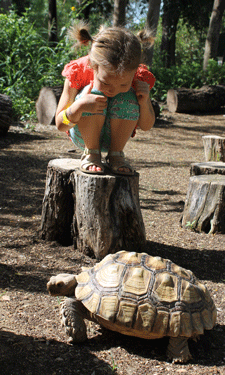 Much has changed since 1985. Forget iPhones and GoPros — 30 years ago disposable cameras didn’t even exist. The rapid development of technology and the means by which we communicate has impacted every facet of our lives including public services.
Much has changed since 1985. Forget iPhones and GoPros — 30 years ago disposable cameras didn’t even exist. The rapid development of technology and the means by which we communicate has impacted every facet of our lives including public services.
While technology in many ways has made our lives easier, it has also cluttered them. At work, we’re expected to do more, do it faster and do it with fewer resources. Parks and recreation has certainly felt this shift in conjunction with a continued competition for limited public funds. But where there are challenges, there are also opportunities.
As part of celebrating the 30th anniversary of July as Park and Recreation Month, we saw an opportunity to share with the world the ways in which parks and recreation make everyone’s lives better. Much like park and recreation agencies balance being “fun makers” with vital service providers, NRPA aims to balance messages about the fun of Park and Recreation Month with the very real impact agencies make in the lives of those they serve.
This July’s 1980s-throwback theme lends itself to a lot of fun activities — 80s-style aerobics classes, movie nights, pool parties and festivals. These are great ways to have fun and engage with community members who may or may not be familiar with parks and recreation services. Once the headbands and legwarmers come off and the screams and splashing subside, however, what is the lasting effect on those who participated? What was the power behind those park and recreation programs?
It’s likely not possible to see how many pounds were lost in the aerobics class or how many new personal connections were made at a festival — at least not without budget for formal surveys. What we do know, however, are national statistics that demonstrate the power parks and recreation has in every community.
To that end and to highlight park and recreation agencies as vital service providers, NRPA created a Power of Parks video illustrating some of the many ways park and recreation agencies contribute to powerful benefits such as healthier people, higher property values and environmental sustainability. This video can be found and shared here.
It is vital for the continued advancement of public parks and recreation that the powerful results of these “fun” programs are shared. Behind that 80s-themed festival is the fact that programming in parks is proven to be an effective means of reducing crime rates. Behind that aerobics class is the fact that access to parks and recreation facilities aids in the control of obesity and helps diminish the risk of disease. The more we can collectively and effectively share the story about the power behind the work we do, the more we raise our field as a whole and demonstrate parks and recreation’s value as an essential service.
In many ways, it is fitting that we celebrate the 30th anniversary of Park and Recreation Month with a video about the power of parks and recreation. The same technology that can clutter our day-to-day lives is now the most effective way of reaching community members, elected officials and important stakeholders. The way we consume information has changed a lot since 1985, so while we may be telling much of the same story, the means in which it needs to be told has evolved.
The number and types of services parks and recreation has provided throughout the past 30 years has certainly evolved and changed, but many things have stayed the same. We are still seeking to engage community members in the outdoors, help them get healthy, and provide places for them to connect and relax. Unlike 1985, however, we seek to connect with a population that has basically unlimited forms of entertainment in the palm of their hand.
While we are oftentimes aiming to remove the clutter of technology from our community’s lives, we shouldn’t necessarily look at technology as a competing force with our goals. Parks and recreation has the opportunity to use technology to both share our own “Power of Parks” story and engage our community members in the essential services we provide.
The next 30 years will certainly show an increase in the integration of technology with park and recreation services, but our mission to be, and be recognized as, essential service providers and the solution for some of the toughest health and wellness, conservation and social equity issues facing society today will endure. By sharing the power of parks and recreation now and into the future, we can all help ensure that vision becomes a reality.
Share the Power of Parks video with your community members and stakeholders. The video and tips for sharing can be found here.
Roxanne Sutton is NRPA’s Senior Marketing and Communications Specialist.
Spending Time Outdoors as a Rule, Not the Exception
The Runner-Ups
“Hug the Earth Festival at Stillwater Prairie Reserve,” submitted by Miami County Park District, Ohio
“Adventure Playground and Splash Pad,” submitted by Anthem Community Council, Arizona
“Slip and Slide at Playfields Sports Complex,” submitted by City of Davis Parks and Community Services, California
“Belly Flop,” submitted by Canton Leisure Services, Michigan

